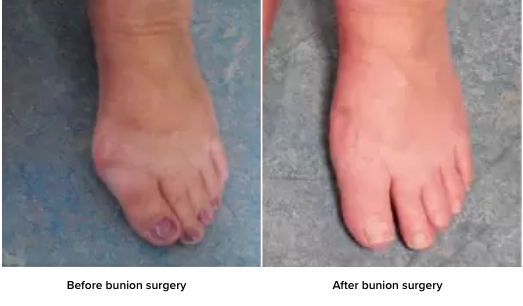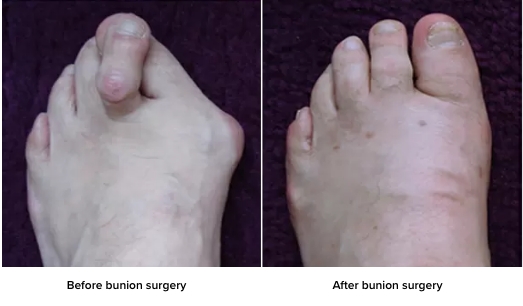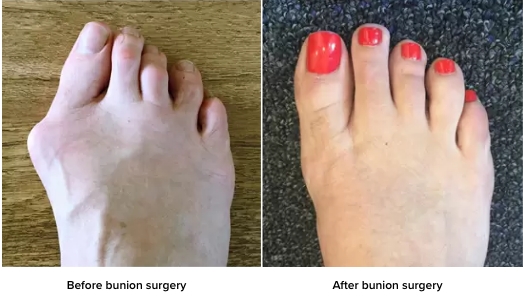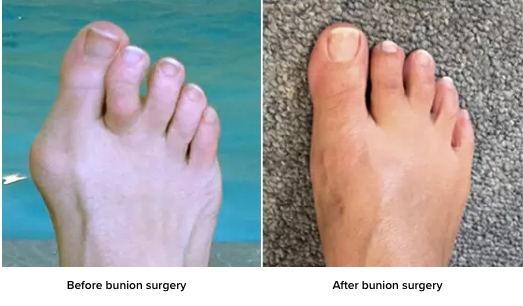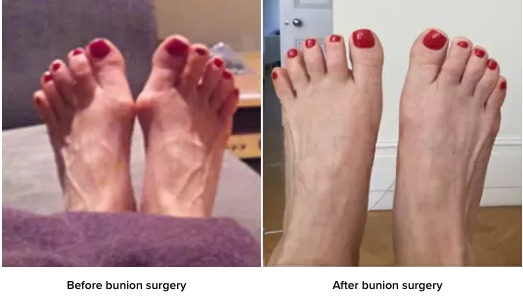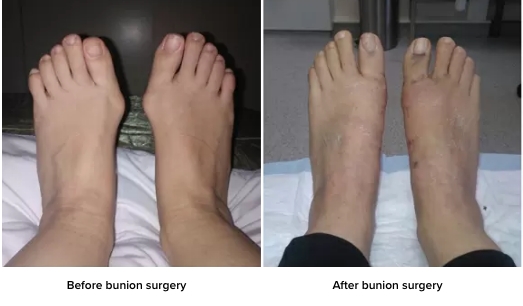
Relieving the pain.
Resetting the standard.
With PROstep minimally invasive surgery, patients get back on their feet faster,2,3 with less pain2 and smaller incisions1 compared to an open procedure. PROstep is resetting the standard of care to help you fight bunion pain.
What is PROstep MIS?
PROstep minimally invasive surgery involves performing surgery through tiny incisions, usually under some form of image guidance. The incisions are just a few millimeters long compared to 3-5 inch incisions used in traditional open bunion surgery.
This type of surgery has been enabled by advances in technology which have allowed the development of very small drills (called burrs). These can be used to make delicate cuts in the bones of the foot to re-align them through very small incisions. The surgery is carried out under image guidance and allows your surgeon to have eyes inside the foot when performing surgery.

Benefits of PROstep minimally invasive surgery
When compared to traditional open bunion surgery, PROstep results in:
- Quicker return to function2,3
- Less pain1
- Smaller scars1,2
- Overall increased patient satisfaction1
- Less need for opioids post-op4
Get back on your feet faster
Bunions can really slow you down but having a traditional open surgery can require a longer, more painful recovery, which means putting life on pause. If you desire a quicker return to function2,3 such as driving, working, exercising or whatever else, choose PROstep MICA minimally invasive surgery—and get relief.

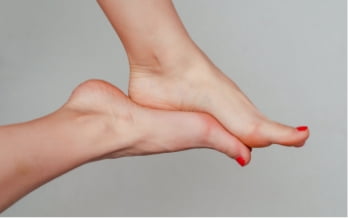
A visible difference
PROstep MIS requires much smaller incisions compared to an open procedure,1 meaning you won’t have a large scar as a result.1,2 Effective relief from bunion pain is the most important benefit but preserving the natural look of your foot is also part of the PROstep standard – a difference you can see as much as you can feel.
Faster recovery
Patients who experienced minimally invasive surgery on average can recover faster compared to a traditional open procedure.2,3 Typically, patients walk out of surgery in a post-op shoe without the use of assistive devices such as a knee scooter or crutches.


About Dr. Andrew J. Kluesner
A physician in Christie Clinic’s Department of Foot and Ankle Surgery, Dr. Kluesner diagnoses, treats and helps prevent disorders affecting the feet and ankles, and performs reconstructive surgery of the foot and ankle in adults and children. Dr. Kluesner graduated with his bachelor’s degree in Psychology from Loras College in Dubuque, IA and went on to earn his doctor of podiatric medicine degree from Des Moines University in Des Moines, IA. He completed his residency in Foot and Ankle Surgery from the University of Pittsburgh in Pittsburgh, PA and fellowship in Advanced Foot and Ankle Surgery at FODRA in Rome, Italy.
Is it time to consider PROstep minimally invasive bunion surgery?
How does it work?
PROstep MIS uses minimally invasive techniques and specialized equipment to ensure minimal disruption to the foot. Smaller micro-incisions are made at targeted positions in the foot as opposed to the larger incisions made in traditional open procedures. Then an x-ray is used to guide a small, specialized burr, which shaves the bone at the joint and inserts stabilizing screws to re-align the toe, ensuring less scarring.
Before & After

About Dr. Andrew J. Kluesner
A physician in Christie Clinic’s Department of Foot and Ankle Surgery, Dr. Kluesner diagnoses, treats and helps prevent disorders affecting the feet and ankles, and performs reconstructive surgery of the foot and ankle in adults and children. Dr. Kluesner graduated with his bachelor’s degree in Psychology from Loras College in Dubuque, IA and went on to earn his doctor of podiatric medicine degree from Des Moines University in Des Moines, IA. He completed his residency in Foot and Ankle Surgery from the University of Pittsburgh in Pittsburgh, PA and fellowship in Advanced Foot and Ankle Surgery at FODRA in Rome, Italy.

Small deformity. Big issue.
It starts small. But eventually, a bunion can become a big issue. First, you notice it. Then, you tolerate it. Then, you normalize it—accepting that pain is now part of your life. Your life needs you—all of you.
What is a bunion?
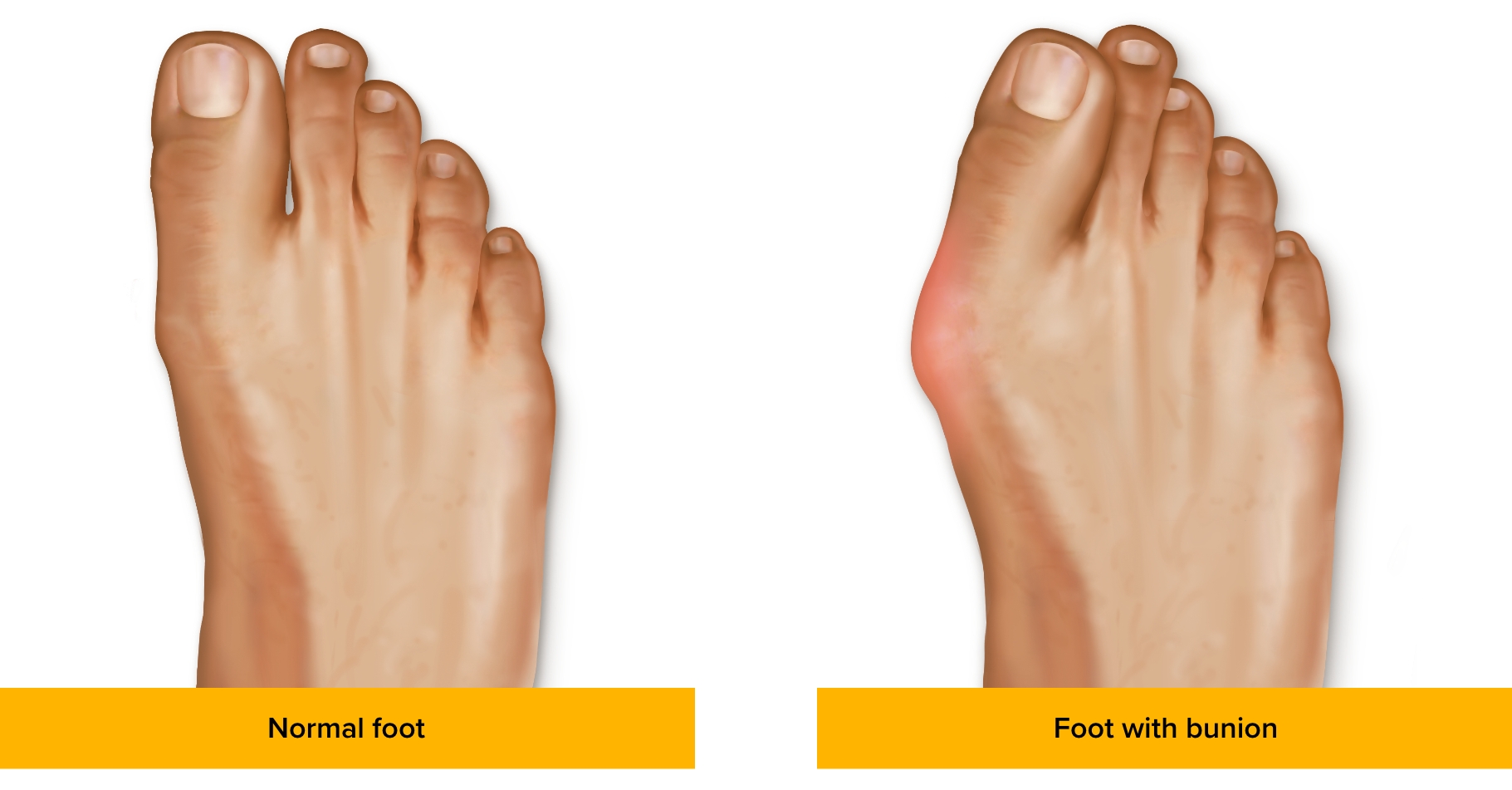
That painful bump on the outside base of your big toe? That’s likely a bunion, or hallux valgus.
Bunions develop most often at the base of the big toe where the joint is located. This joint (known as the Metatarsophalangeal joint) is where the first long bone of the foot meets the first bone of the big toe. Due to its location, bunions can often reduce the flexibility of the toe and cause continuous pain.
Bunions often develop slowly overtime. If left untreated, the normal structure of the bones will change, creating the bump you see on the foot. The deformity will gradually increase causing further deformities like the toes pushing against each other and overlapping. In time, it may become increasingly difficult to wear shoes or walk due to pain.
Bunions start out small, but usually get worse over time. Because the big toe joint flexes with each step, the bigger the bunion gets, the more painful and stiff it will become.
What causes a bunion?
Anyone can get a bunion, but they are most often seen in women. While the exact causes of bunions are unclear, genetics and lifestyle choices influence the likelihood of developing bunions and the speed at which they progress and get worse. Wearing tight-fitting or high-heeled shoes, for example, often worsens bunion pain and the deformity. Inflammatory conditions like rheumatoid arthritis or neuromuscular conditions, such as polio, have also been linked to bunions.
What are bunion symptoms?
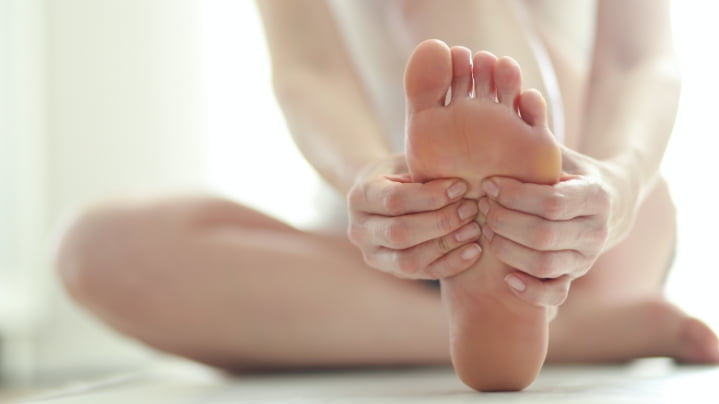
In addition to the bump on the foot, bunions can cause:5
- Recurring pain and tenderness
- Redness and inflammation
- Hardened skin on the bottom of the foot
- Calluses or corns on the bump or between the toes
- Stiffness and limited motion in the big toe, which can lead to difficulty walking and standing

